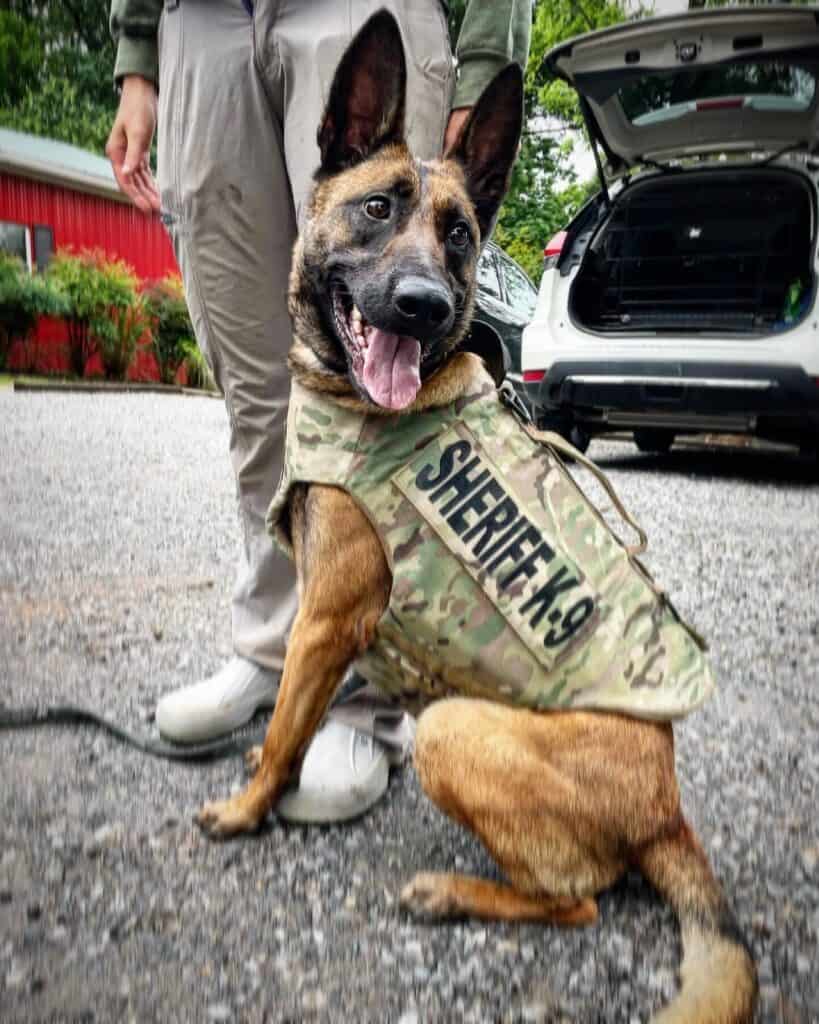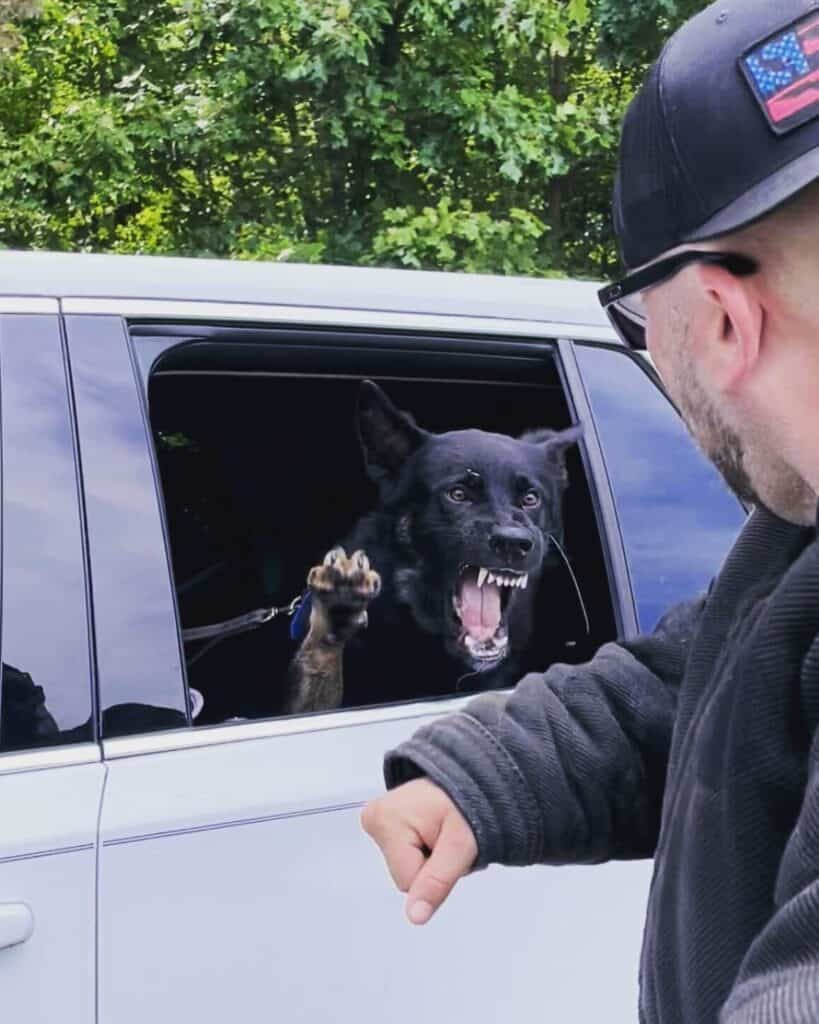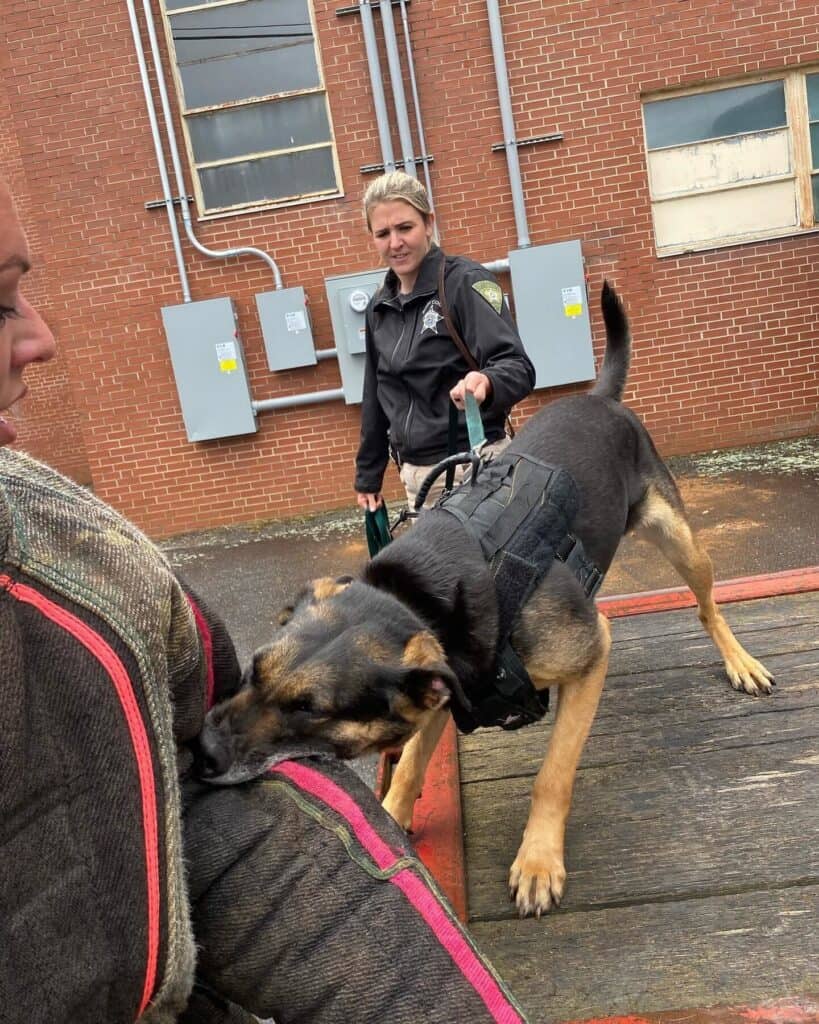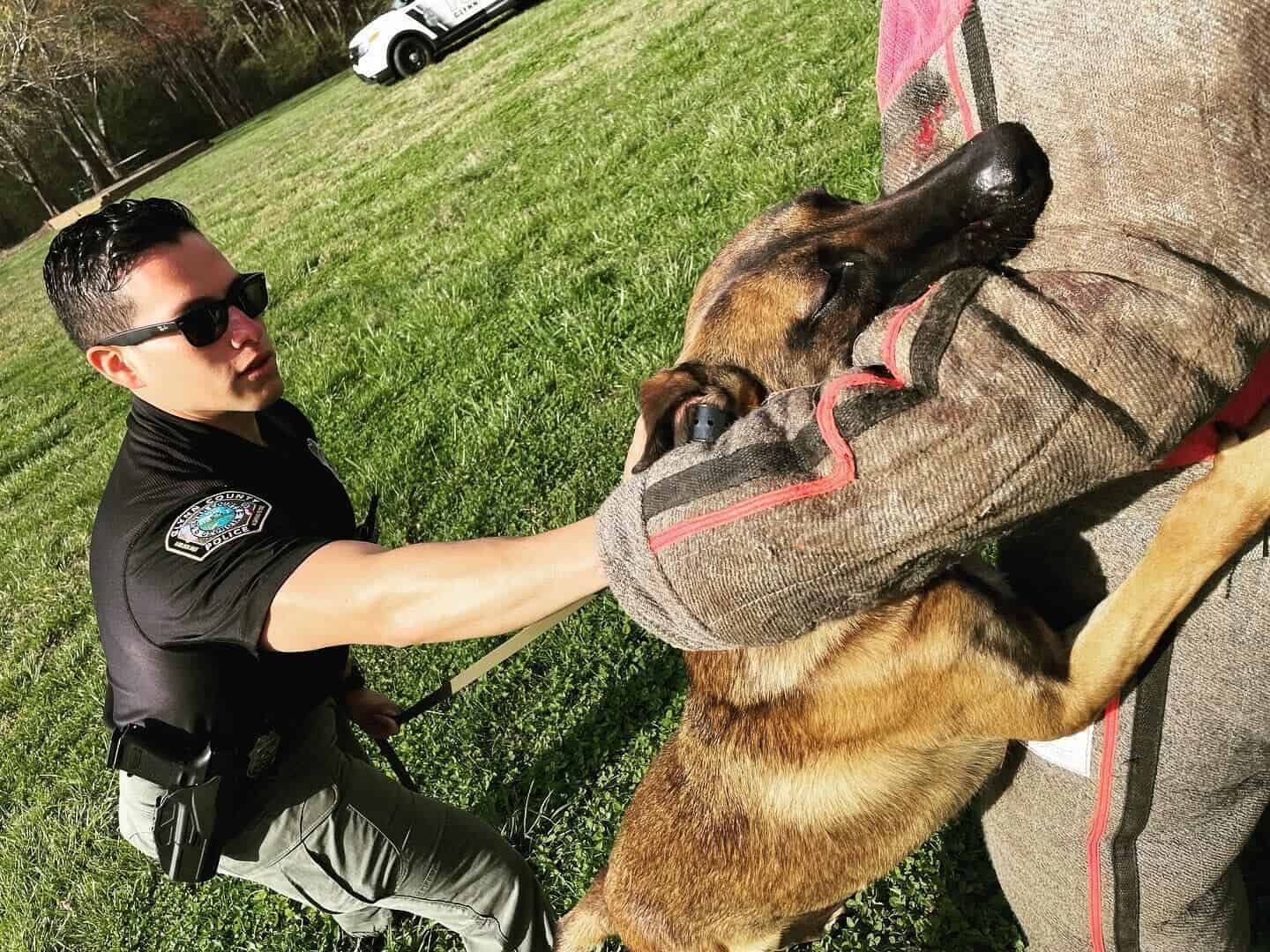The versatility and talent of highly capable working dogs provides multiple benefits for police departments. Whether a K9 is trained to detect narcotics, help locate missing individuals, or identify explosives, these amazing dogs help to keep our communities safe.
Another area of K9 training that can be a huge asset to departments is patrol training. A trained police patrol dog is taught how to safely apprehend a suspect and protect their handler in a variety of different scenarios. For example, a K9 may protect their partner during an altercation, clear a building, or trail a dangerous suspect.
When deployed alongside a knowledgeable, capable handler, patrol dogs can be a formidable asset in a variety of situations. The key is to not only ensure that the dog is properly selected and well-trained, but that their training – and the training of their handler – is kept up-to-date to ensure operational efficiency is maintained.
In this article, we’re going to look at seven crucial ways a patrol dog could benefit your department.
1) A well trained K9 will not cause multiple injuries
In a world of liability and litigation, ensuring that all members of your team act with safety in mind is of paramount importance. That edict extends to the K9 members of your department.
A properly trained patrol dog will be taught to target and grip non-lethal locations on the body, such as the forearm, upper arm or legs. This ensures that the dogs will apprehend the suspect as safely as possible, whilst maintaining a secure grip that prevents the suspect from escaping.
The grip is also important. Patrol dogs are trained to bite and hold in one location, because this ensures that they will inflict as little damage as possible on the suspect, whilst bringing the situation to a close by ensuring compliance.
2) A patrol dog can be recalled

When officers are faced with a potentially dangerous situation, there are often split second decisions that have to be made. Naturally, every situation will be slightly different and may require specific actions to protect law enforcement personnel or civilians – but when utilizing a taser or bullet, there is obviously no way to withdraw or stop the action once initiated.
However, using a patrol dog is a little different. A patrol dog can provide adequate force to bring a situation to a close – but they can also be called back if necessary (for example, if the suspect surrenders peacefully). This provides the possibility of the suspect complying with an officer’s request – even after the dog is deployed – without a bite.
3) Patrol dogs can help encourage compliance without force
A patrol dog arriving at the scene can encourage a suspect or crowd to comply – without having to use any form of force, or in some cases, without even having to get out of a vehicle.
The sheer presence of a large, intimidating patrol dog with a ferocious bark can often be enough of a deterrent to encourage compliance with an officer. At the very least, the deployment of a patrol dog will give the suspect another thing to think about before deciding to disobey an officer’s request.
4) A dog can cover ground much faster than a human

Police K9s trained to work patrol in an indoor environment will use their nose to locate a suspect who may have barricaded themselves in a building or home. In this situation, this can be done prior to sending in an officer.
In a multi-storey building, or another area of vast expanse (such as a warehouse or industrial building), the speed and agility of an athletic working dog can cover more ground than a human could dream of. This reduces the time and resources required to find a suspect who may be hiding.
Usually, a patrol dog trained for this scenario will alert their handler at the door where they have located the suspect by barking (if the suspect is out of reach for a bite).
5) Handler protection
K9s and their handlers make a formidable team, relying upon one another to do an effective job whilst keep each other safe.
A K9 that has a strong bond to its handler can grow protective – especially when using scenario-based training to prepare the dog to protect its handler when needed. Having the patrol dog at the side of its handler provides another tool to assist in keeping their handler safe from potential injury.
6) An asset when trailing a dangerous suspect

While dogs should not be encouraged to bite every time they trail, having a Patrol K9 who can trail dangerous subjects provides another layer of safety – both when working the trail, and when arresting the suspect.
A Patrol K9 who is able to handle a suspect, or bring them out of difficult terrain so that they can be cuffed and detained, is much easier and safer for everybody involved than having to use another means of force.
7) Apprehending a fleeing suspect
When a suspect flees the scene of a crime, officers need every tool at their disposal to ensure the suspect is apprehended safely.
As dogs can move far more quickly than humans, it is far easier for them to catch up to – and apprehend – a fleeing suspect. As opposed to waiting for a trailing dog (which can add time and allow the suspect to create distance), a patrol K9 can take the suspect off their feet before they can get out of sight.
In conclusion
When their training is maintained and they are deployed appropriately, patrol teams can be a huge benefit to a department.
These K9s play a pivotal role in keeping everybody – themselves, their handlers, and civilians – safe in dangerous situations.




